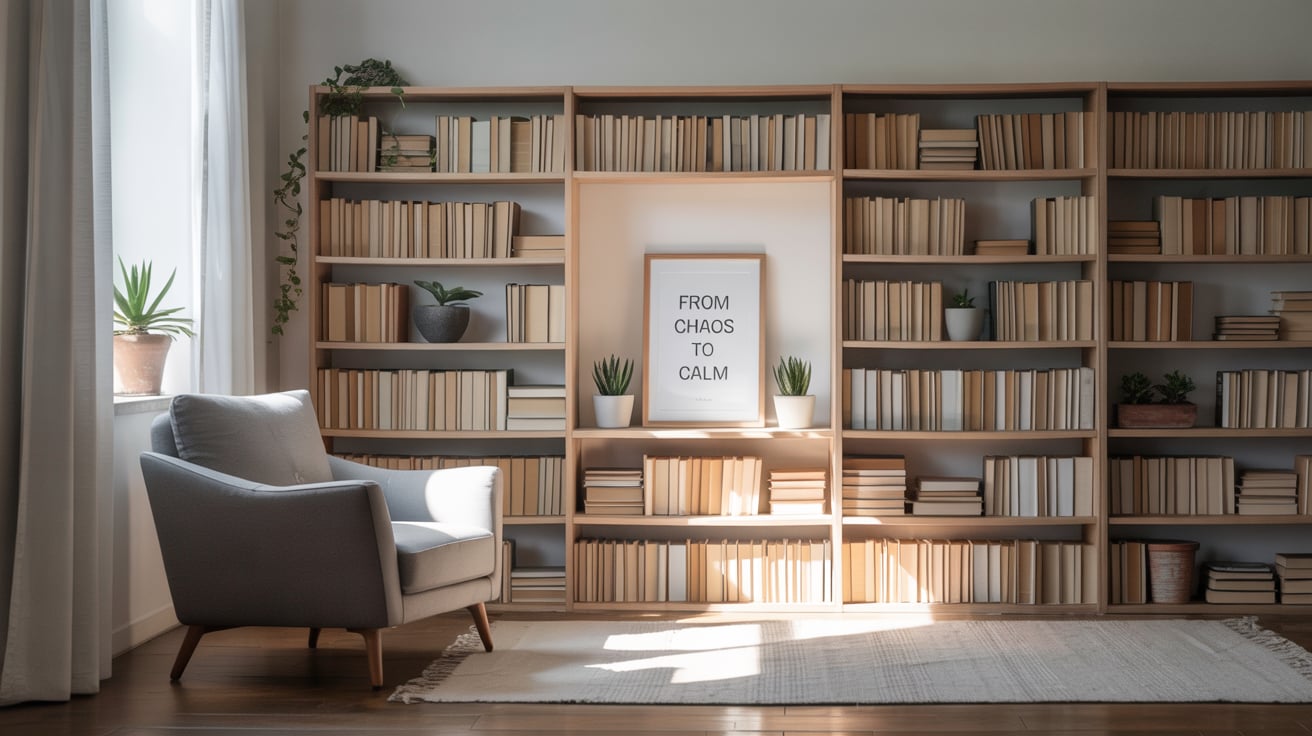
Science-backed strategies to transform your cluttered home into a sanctuary that supports your family's well-being. Your environment has a profound impact on your mental health, and with the right approach, you can create a space that actively promotes peace and productivity.
Your home is supposed to be your refuge from the world, but if you're like most busy families, it often feels more like a source of stress than sanctuary. That pile of mail on the counter, the overflowing closets, the kitchen table buried under homework and random items—these aren't just aesthetic problems. Research shows that physical clutter directly impacts mental health, increasing cortisol levels, reducing focus, and contributing to feelings of overwhelm and anxiety. The good news? Creating an organized, functional home doesn't require perfection or a complete lifestyle overhaul. It requires understanding how your environment affects your mind and implementing systems that work with your real life, not against it.
The Cortisol Connection: UCLA's Center on Everyday Lives found that women living in cluttered homes had higher levels of cortisol throughout the day compared to those in organized spaces. Elevated cortisol doesn't just make you feel stressed—it affects sleep quality, immune function, and decision-making ability.
Decision Fatigue Reality: Every item without a designated home requires a micro-decision about where to put it. These tiny decisions accumulate throughout the day, exhausting your mental energy and leaving you feeling drained by simple household tasks.
Visual Processing Overload: Princeton University Neuroscience Institute research revealed that physical clutter competes for your attention, decreasing performance and increasing stress hormones. Your brain is constantly processing visual information, and too much information creates mental exhaustion.
The Completion Bias: Unfinished tasks and visible reminders of things left undone create a psychological burden called the Zeigarnik Effect. That pile of unsorted mail isn't just taking up counter space—it's occupying mental bandwidth every time you see it.
The Perfectionist's Trap: All-or-nothing thinking leads to organizational paralysis. If you can't do it perfectly, you don't start at all. This mindset keeps you stuck in cycles of chaos followed by overwhelming clean-up sessions that aren't sustainable.
The Busy Family Reality: Traditional organizational advice assumes you have unlimited time and energy. Real families need systems that work when you're tired, rushed, and dealing with unexpected life events.
The Different Styles Dilemma: Family members have different organizational styles. Some are visual organizers who need to see everything, others prefer everything hidden away. Successful family organization accommodates these differences rather than forcing everyone into one system.
The Emotional Attachment Factor: Items carry emotional weight—from children's artwork to inherited furniture. Effective organization strategies acknowledge these emotional connections rather than dismissing them.
Clear Surfaces, Clear Mind: Research consistently shows that clear horizontal surfaces (counters, tables, desks) have an immediate positive impact on mental clarity and stress levels. Prioritize keeping key surfaces clear even when other areas need attention.
The Power of Designated Homes: When every item has a specific place, returning it becomes automatic rather than a decision. This reduces decision fatigue and makes tidying a quick, mindless task rather than a complex problem-solving exercise.
Visual Rest Areas: Your eyes need places to rest. Organized spaces include areas of visual calm—blank wall space, clear surfaces, or simple arrangements that don't demand mental processing.
Functional Flow: The most calming spaces support your natural movement patterns and daily routines. Organization that fights against how you naturally move through your home creates constant friction and stress.
Kitchen: The Heart of Home Stress
The Problem: Kitchens accumulate everything—mail, backpacks, homework, keys—because they're the natural landing zone for busy families. This turns your food preparation area into a source of daily stress.
Mental Health Strategy:
Quick Win: Implement a "one-touch rule" for mail—sort it immediately into action needed, file, or recycle. Never let mail accumulate.
The Problem: Living rooms often become dumping grounds for items without designated homes, creating spaces that feel chaotic rather than relaxing.
Mental Health Strategy:
Stress Reduction Tip: Keep a donation box in a closet or garage. When you notice items you no longer use, immediately put them in the donation box rather than letting them take up mental and physical space.
The Problem: Bedrooms often become secondary closets and storage areas, disrupting sleep quality and making it difficult to truly rest and recharge.
Mental Health Strategy:
Sleep Quality Enhancement: Remove work materials, exercise equipment, and laundry from bedrooms. Your brain should associate this space with rest, not tasks.
The Problem: Children's rooms often become overwhelming spaces that make it difficult for kids to focus on homework, play creatively, or develop independence.
Mental Health Strategy:
Building Life Skills: Involve children in organizing their own spaces. This builds executive function skills and creates ownership of their environment.
The Problem: Home offices often become catch-all spaces for household paperwork, making it difficult to focus on work and creating stress around both professional and personal tasks.
Mental Health Strategy:
Focus Enhancement: Keep desk surfaces clear except for current projects. Visual distractions reduce productivity and increase stress levels.
Start Small: Don't try to organize your entire home at once. Start with one room or even one drawer. Small wins build momentum and confidence.
The 80/20 Rule: You likely use 20% of your belongings 80% of the time. Focus on organizing and optimizing access to the items you use most frequently.
One In, One Out: For every new item you bring into your home, remove one item. This prevents accumulation and forces you to be intentional about purchases.
Designate Homes: Every item should have a designated "home" where it lives when not in use. This eliminates the question of where things go and reduces decision fatigue.
Regular Maintenance: Set aside 15 minutes each day for maintenance. This prevents small messes from becoming overwhelming projects.